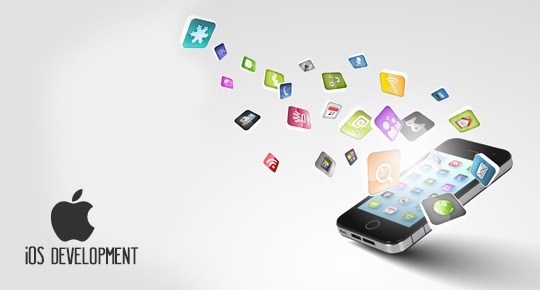#i am vibrating with enough force to power several major cities
Text









a moodboard.
#i am vibrating with enough force to power several major cities#AHAJDNSBSBSNDBSBARKBARKBAMR#ofmd#ofmd s2#ofmd season 2#ofmd s2 trailer#fucking unwell
41 notes
·
View notes
Text
The World of iOS and How it Develops Today
Since the last 70 years or so, mankind has seen a significant leap in the field of technology. It was in 1946 that the ENIAC (the first supercomputer) opened its eyes into this world) and by 1970 we already had a Personal Computer – a desktop PC as we know it today, available. The coming years saw the advent of mainframe and mini computers. Though the Internet has made its presence felt as early as 1969 at DARPA, it became a household name only when Windows 95 came into being. That is when a new technology came into being parallel – the Mobile (somewhere towards the end of the 20th century).
It was the turn of this technology now to occupy the brain and mind of us humans. The mobiles within just two decades have progressed from just a telephone to almost being a palmtop computer. The content that I am typing now may as well be provided as an input to some application which can read it for you, in a voice you prefer.

It was the Symbian mobiles in the beginning, but with Android as an option, the masses forgot the operating system soon that had brought new technology to this world. With Google at its back, Android powered devices took over the world as anything and people loved it. As the users demanded more and more from the hand-held sets, it was the Apple powered devices that proved a threat to the Android. According to a survey Android alone accounts for 51.1 % of the market share but iOS users are loyal to it more than perhaps the Android users and that is the reason why iOS is seeing an increase in its market share since 2017. Today there are a lot of iOS App development companies in India, US, UK and elsewhere that are loyal to this OS. Although, other mobiles are also having their followers who are loyal to them the iOS app development companies in India are flourishing as they are well supported by the elite of the Indian high class. Let’s see what’s new about iOS in the market as of now:
1.
Apple could launch 16-inch MacBook, new iPad Pro this month: Apple is scheduled to host this month's launch event where new MacBooks and iPads are expected. Apple has scheduled a number of products that it plans to introduce to the user during its October 2019 event. These comprise of a 16-inch MacBook Pro with a scissor keyboard, refreshed iPad Pro model along with Apple Tags items trackers. The company hosted an event on October 30, 2018 at the Brooklyn Academy of Music, New York City, and is expected to host the event again this year around the same time. The 16-inch MacBook Pro is rumored to be the same physical size as the 15-inch MacBook Pro, but for a larger display it will feature smaller bezel sizes. While the existing11-inch and12.9-inch iPad Pro models debuted in October 2018, these high-end tablets could be upgraded this time by the manufacturer. Also, Apple can release its item tracker similar to ' Apple Tag ' famous tile items. It's a tiny device attached to items to make them easy to find, it's combined with elements of augmented reality to help users find their lost items easily.
2.
iOS 13.1.3 is the latest software update from Apple to fix iPhone and iPad bugs: With new bug fixes and performance improvements, Apple is releasing iOS 13.1.3 to the public today. The update, in addition to iPadOS 13.1.3, is now rolling out to iPhone, iPad, and iPod touch users. Apple says the Mail app's update address issues for Bluetooth connectivity, and more. A summary of what has changed in iOS 13.1.3 follows. iOS 13.1.3 contains bug fixes and iPhone enhancements. The update
fixes an issue that might prevent an incoming call from ringing or vibrating phone.
Helps fix a problem that may prevent the opening of an invitation to a meeting in Mail
Solves a problem in which data in the Health app may not show correctly after adjustment of daylight savings
Solves a problem where Voice Memos recordings may not be downloaded after restore iCloud Backup
Addresses a problem where apps may not be updated during iCloud Backup
Fixes a problem that can stop Apple Watch from successfully pairing
Resolves a problem where alerts may not be received on Apple Watch
Fixes a problem where Bluetooth may disconnect on certain vehicles
Improves the reliability of Bluetooth hearing aids and headsets
Addresses release output for applications using Game Center
Recently, Apple released new versions of iOS 13 at a rapid pace. Apple released iOS 13.1.1 last month and just two days later followed up with iOS 13.1.2. The updates focused on improving reliability and addressing bugs for items like the Camera app, iCloud backups, and more. Finally, one would agree that the users can expect general performance improvements, squashed bugs, and more thanks to iOS 13.1.3. Apple is also currently involved in testing a beta version of iOS 13.2 with its new Deep Fusion camera technology .
3.
iPhone users complaining about iOS 13.1.2 issues: The reportedly rushed release of the latest version of Apple's mobile operating system has posed major problems. Apple support forums and Twitter account contain hundreds of iPhone user complaints about both making and receiving calls. Although the update was intended to bring a range of new features to type, including dark mode and swipe, a number of disruptive bugs have also apparently been introduced. One of the most frustrating is the inability to make calls, though users usually complain about battery drain and overheating.
One of the iPhone users complained about the company’s support forum: "After updating, the telephone is heating, batte ry draining, the worst incoming calls don't sound. What's the worth of a ' mobile ' if it doesn't sound like it?". Reports suggest that after a number of critical security issues that have arisen recently, Apple has been forced to rush the release of the new iOS version. A vulnerability found by the clandestine and prestigious group of security researchers known as Project Zero was among the most troubling.Apple had said at that time that it will not announce, discuss or confirm security issues for the safety of their customers until an investigation had taken place and updates or changes have been made generally available.
The transition to iOS 13.1 is intended to fix many of these vulnerabilities, and the security risks that a known code bug that presents to users once a patch is available is so severe that it is never considered reasonable to postpone upgrading. But the downside of widely reported vulnerabilities may prevent users from downloading the update, leaving hackers and cyber criminals at risk. Apple quickly pushed out another update to resolve the new bugs and patch those in the previous release of iOS version 13.1.1, but this rush seemed to introduce more bugs again.
The process seems to have been replicated with iOS 13.1.2, with users complaining about calls, Face ID, Mail, Messages, and battery leakage problems. How fast these issues will be addressed is not clear. Apple was unable to respond to a request for comment immediately.
4.
Apple slams Google for raising the false alarm on iOS security: Apple has blamed Google for making a false perception that its iPhones are at risk due to security bugs that allegedly penetrate many malicious websites into its iOS operating system. Researchers working in Google's Project Zero team had discovered multiple hacked websites that used iPhone security flaws to attack users who visited these websites, exposing their personal files, emails, and location data in real time. The websites distributed their malware indiscriminately and have been active for years, according to Google. "All evidence indicates that these website attacks were only operational for a brief period, about two months, not ' two years ' as Google implies," according to the iPhone maker. Google's Threat Analysis Group (TAG) found that there was no target bias because visiting the compromised site was enough for the exploit server to attack the iPhone and mount a monitoring implant if it was successful. "We predict that thousands of visitors per week are visiting these pages," the Google blog post said.
Google researchers also said they found a vulnerability that used end-to-end authentication applications such as WhatsApp, Telegram and iMessage to access all the server files on the victim's iPhone.
Apple said it patched the bugs in February working extremely fast to solve the problem just 10 days after hearing about it.
When Google came to us, we were already addressing the exploited bugs," the company said, adding that its software security teams around the world were continually iterating to introduce new defenses and vulnerabilities for updates as soon as they are discovered.
#App Developers India#India App Developers#Mobile App Development Company#Mobile App Development Company India#Mobile App Development#Best App Developers#Top App Developers In india
1 note
·
View note
Link
Keary Kase created a legacy not only for himself but Oregon with his classic record “Oowee.” And with recording artists the biggest influencers in the world, during the current widespread of a social issue known as Black Lives Matter, Kase dedicates his star power to bringing awareness to the importance of unity against police brutality and social injustice. Now not a time to make people dance, Keary Kase is here to wake people up.
“We, as humans, have evolved to higher consciousness,” he says. “In the last 5 years, we have experienced a re-awakening. We are aware of our connection to each other and the detrimental effect that negative vibrations have on our development. The days of praising the lord in one breath and cursing the devil in the next are reaching an end. It has become obvious that both of those forces, however, you choose to address them, exist inside every one of us.
The universally recognized symbol of balance, yin and yang, depicts a white shape with a bit of black at its core and a black shape, with a bit of white at its core. That symbol masterfully describes the human race as we are today. Unfortunately, we have a group of people who want to continue with the current version of slavery that allows them to move with a level of impunity and shields their families from everyday struggles endured by those outside of the group for generations to come. The shackles are off. They are not going back on.”
While there have been plenty of celebrities joining the protesters in the streets around the world. There are a majority of celebrities who have shy away from getting involved due to commitments with endorsements and branding. Keary Kase is definitely not one of those individuals and frowns upon those who are more concerned with their bank account than morality.
“I’m definitely not afraid to align with the BLM movement. We saw artists release songs and videos in the days following George Floyd’s murder. I watched Nick Canon’s “I Can’t Breathe Again,” for the first time with one eye opened. I was afraid the Comedian might soften the intensity of the moment. Instead, he came off on point with it. We need more straight talk from artists, now, more than ever. I’m with it 100% and my music will reflect my support.
My only issue with the movement is that it may be providing a cloak for any individual or organization wanting to undermine the true BLM agenda. We see politicians attempting to pass legislation at the Senate by feigning support of bills like the Emmett Till Anti-lynching Act while attempting to pass bills designed to lynch us. Love goes out to Senator Kamala Harris, btw, and the finger to Senator Small Paul.”
More than just a protest, Keary Kase involvement in the current movement is extremely personal, like most Black men in America, he ‘s been on the receiving in of police misconduct his entire life. Traumatic experiences due to Police’s abuse of power and authority which has become the normal understanding for Black America.
“When I meet a black man over the age of 25, I assume he has been wrongfully accused, arrested, prosecuted, beaten, judged, and mistreated. Often to the point of ruin (felony), leaving him with very few options to proceed with. Similarly, we are viewed by many white people in just the same way. The only difference is, they assume we are criminals by nature and that we have been justly convicted of any crime found in the record of our criminal history. They believe that aggressive arrests, beatings, and deaths occurring during infraction driven encounters are justifiable incidents in which a person of color did not comply.
When I was old enough to drive (16), I became exposed to police bias and harassment. Several times each month, I would get pulled over and asked to get out of the car so the officers could illegally search my car for drugs and weapons, which I told them I did not have. There is a suburb to Portland called Lake Oswego, which is known by EVERYONE as ‘Lake No Negro.’ If you are “driving while black” in Lake Oswego, you will be followed by the police. If you stay on one of the two main streets that pass through, they will escort you to the city limit and make a u-turn. If you happen to have an ‘intermittent tail light,’ you might get pulled over and hit with multiple tickets. This is Lake Oswego’s way of discouraging black visitors. The Lake Oswego Police Department should definitely be defunded. The first time I had to physically defend myself against police was age 17. There was a biker bar in Southeast Portland where my friend, his wife and newborn child lived. We would walk by the bar going to and from the store, throughout the day, as teens do. One night, as we were walking by, someone standing in front of the bar said ‘NIGGERS.’ We looked across the street where three older white guys, maybe in their 30’s-40’s, were standing and provoking us. We crossed the street to engage them and the entire bar spilled outside to surround us. A fight broke out and the police were called. When they arrived, the 6 or so police officers immediately started hitting us with their batons. I remember getting beaten by 4 officers, while I was on the ground, before being cuffed and placed in the back of a cruiser. Once the officers ran our names and realized we were mostly minors, they drove us home. None of the people in the bar were beaten, cuffed or questioned. It was Just-us. As an adult teen, I was convicted of a crime that I did not commit. The detectives told me it did not matter if I did not commit the crime. They said unless I told them who did commit the crime and the guilty party would verify that I was not involved, I was guilty.
In my twenties, I was shopping at a notoriously racist branch of a store called Fred Meyer, in Beaverton, OR. I had just purchased a karaoke machine and was waiting by the door for my friend to get out of the bathroom. A security officer told me I couldn’t stand there and I needed to leave. I told him that if I was going to be treated that way I was going to go to customer service and return the item. He said I could do it another time but I needed to leave immediately. I walked to the customer service desk where they refused to return the item I had just bought. The security officer grabbed my arm, I reacted and he fell, breaking his glasses in the process. Another security officer grabbed me from behind and put his arm around my neck. I started to blackout and was taken down. The police were called and I was arrested for trespassing. In the police report, they said I had damaged the karaoke machine and demanded a discount. It further said that I started yelling and making threats, then attacked the security officers as they addressed me. Again, I was convicted. After court, the first security officer approached me and said ‘see what happens when you go against us?” I replied, ‘yeah, you get your glasses broke.’
I often ask myself if that really happened because it makes no sense. Police are not our masters. They do not have the right to arrest us, beat us, or kill us when we don’t agree with them. But it’s not just the police who abuse power to the detriment of people of color, it’s the entire judicial system. The police are just the spear’s tip. Arguably, everybody gets the tip but we, especially black people, always end up getting the shaft.My friend, Sgt. James Brown was killed by county jail staff in El Paso, TX while he was serving a 2-day sentence for a DWI. In his final moments, while struggling with the 5 officers who were restraining him, guess what his last words were. Years later the video of his murder was released. I watched my friend, who had just been honorably discharged from the Army after 2 tours in Iraq, gasping and shouting repeatedly, “I CAN’T BREATHE.” He begged the officers, who were killing him, to help him. I became friends with his mother and stepfather in the years following his death. It is still hard to look into his mother’s eyes to this day. Justice for Sgt. James Brown.”
In a radical mood, Keary Kase supplies a soundtrack to the current climate with new music in the works. Displaying that same energy and impact that created classic songs like “Change Gon’ Come,” “What’s Going On” and more, Kase’s knows that today’s music can deliver a similar impact. He explains:
“I won’t be writing any love songs for a while, but for black people, being killed by police, former police, and the likes has become a condition of our reality. This is not news to us. If you listen to Hip Hop from the ’70s, when it was created, all the way up to the hip hop of 2020, (pre- George Floyd) you will hear a steady flow of lyrics about police bias and brutality and the killing of black people at the hands of the police. We don’t even call it “murder” because, until 2020, they were never convicted or even charged with the crime.
Speaking against the system through our music is what we have done since our ancestors were slaves. Today’s field calls may be repeated by a rifle.”
He further elaborates, stating:
“Thanks to the internet, fans will be impacted by the artists of today even more than they were by our predecessors. Whether or not the message will be delivered and who will deliver it is still a question. All of this is still so recent. As an artist, I observe life, collect data, and translate through my perspective. I’m still taking it all in. If other artists are in the frame of mind that I am right now, fans should be expecting to hear some of the most inspirational music they have ever heard from us.”
0 notes
Text
Gain Your Lives, or Win Your Souls: Political Theology in Reaction

By Robert Schmaltz. December 15, 2017.
After posting The Death of Faith Requires the Absence of Faith to my blog, fellow writer Gianni Friegas (Twitter: @GianniFriegas) was thoughtful enough to both critically and carefully engage with the text. Gianni’s comments reveal alternate points of entry into the text, prompting further consideration on my part. For this I am thankful. I pray what follows demonstrates at least a measure of thought which Gianni induced.
The Death of Faith… is intended to serve as an introspective answer to an ascetic question. A question in good faith seeking an alternative to making contributions to the swarming antagonistic attitudes within and without the church. The aim of the piece is to shape a faith based response to a point of tension between rational and empirical experience. The thinking therein follows largely from the synoptic gospels. These meditations rest more in the Gospel According to John, a book that is as mystical as it is political.
It is plain to say that for Christians the world maintains a constant strain on the life of our faith. God calls on us to recognize the gift of suffering as means to extend beyond tribal inclinations to recognize this strain is put on all of humanity in the world. As I write in The Death of Faith…, sustaining a religion of love amidst “the widespread presence of ferocious violence, grinding poverty, severe hunger and thirst, domestic abuse, rape, the human mills of war and genocide” is arduous. Made all the more straining by those segments of the church that serve as accessories to policies which sustain those cruelties.
Though, through prayer and mindful attention toward the Liturgy, what fills my heart is the intimate nature of the space provided for receiving and embracing the ministry of Jesus. Every time I turn to accuse, to judge, or to express some rage prompted by the day’s state politics I sense my participation in acts that are wholly inimical to Christianity. It is easy, perhaps even comforting to imagine specific “others” cast into the mob that condemned Christ to death. We might imagine “others” as responsible for making a mockery or a fraud of the Messiah. It is easy to imagine “others” amidst the riotous crowd lining the way for Jesus of Nazareth from sentencing to Golgotha “(the place of) the skull.”
Meanwhile, the principal difficulty which comes amidst a life of faith is not foremost from without but centrally from within. The sad fact is we are all at some instance a part of that disorderly mob animated by anger, fear, and frustration. We are a part of that mob as we comply through both body and soul with reactions persuaded by the enemy of humanity. Roc O’Connor, SJ, (2015, pp. 25-16) offers this centering exercise as a way to reflect on this part of our fallen nature, suggesting Christians need only turn to Matthew’s account of the Gospel and bring a personal examination to these few passages:
Blessed are the poor in spirit, for theirs is the kingdom of heaven (5:3)
Blessed are the ones mourning; for they shall be comforted (5:4)
Blessed are you who reproach you and persecute you and say evil against you falsely for my sake. Rejoice and be glad (5:11-12)
But I tell you, do not oppose evil. But whosoever strikes you on the right cheek, turn to him also the other (5:39)
But I tell you, love your enemies and pray for those persecuting you so that you may be children of your Father in heaven (5:44-45)
Christians are shown that all of humanity is bestowed with many gifts, including love and forgiveness. The Ministry of Christ elevates these two gifts, especially love more than any other as the means to following in companionship with Him in serving the established Kingdom of God. Now in the Matthew’s Gospel we also find Jesus exclaiming “Do not suppose that I came to bring peace on the earth; I came not to bring peace, but a sword…” (10:34-35). Receiving scripture as whole, it seems to me in bad faith to imagine this “sword” as not materially relevant to holding up notions of just war, violent rebellion and forceful self-defense.
Though critically speaking, even while under duress the majority Christians are living non-martial lives. It benefits us to turn to Luke 12:51 where the sign of the sword is filled with “division.” The sword then to faithful is the instrument of discernment, used to navigate the course of the soul amidst the dense complexes of motives of being in the world. The sword, division, and discernment echo back to Micah, who faced with desolation “will look to the Lord” waiting on the God of salvation, in prayer knowing that God hears us (Mic. 7:7). Again, taken as a whole this is the radical act which carries our faith through the vicissitude to now eternal; from the staff in the right hand of Moses to Jesus in the Right Hand of God.
For Christians, the mystical is political (borrowing from Orthodox Theologian, Aristotle Papanikolaou). The mystical takes up its practical implications through our turn away from a being moved by the creaturely evil of our fallen self toward participating with society through actions which are witness to God’s “divine providence which with strength and gentleness guides human and cosmic history” (Catechism of the Catholic Church).
Participation that begins in a manner of taking care of personal and interpersonal needs with respect to family, friends, and meaningful work. Participation that then forms an ethic which works to shape society, aware of social conditions, and acting to promote right and just conditions for life to flourish. John Milbank describes this as participating in the church of the Eucharist, where sacramental potential is found everywhere in how we perform our personhood in relation all humans and non-humans in the world. This then serves as an ordering principle, resulting in political activity (Papanikolaou, 2012, p. 138).
To those who will listen, Jesus says “No one can serve two masters… You cannot serve both God and mammon” (Mt. 6:24). We cannot act as messengers of love, compassion, and forgiveness while at the same time act from a place of indignation and rage. The ministry of Jesus makes clear, to become more responsive to the Word of God we must develop our mindful attention to God’s unceasing divine presence in the world.
To do this it would seem, we must become less responsive to the constructive entity of worldly power that draws a great deal of influence from a state of confusion, evoking the reign of Hezekiah extended from the city of Babylon. This is a power of mastery that impresses upon body and soul. A power of sinful pride that is continually (not to be confused with eternally) managed and coordinated today by industrial executives, academic administrators, heads of state, bureaucrats, specialists, and all who seek to alienate thus resulting in a broad and deep reaching apparatus.
This apparatus is consistent with Agamben’s description, having a “concrete strategic function, always located in a power relation” and as such “appears at the intersection of power relations and relations of power.” It is the reign of power that is exercised over the mind/body down to the biological compound. A bio-political state seeking to command every instance of life toward death. Just as Jesus was tempted in the wilderness, I suggest this apparatus finds each of us most passionately, individually, where we raise the instrument of discernment to establish divergence at the seam of our faithful Passover from one mode of being to the being with One.

“If your eye is sound, your whole body will be full of light…” (Mt. 7:22).
Eye is sound, being alert to the continuous and regular vibrations of God’s unceasing divine presence.
Jesus calls us into religious experience through the major-minor. Major in that Christ inaugurates the Kingdom of Heaven now. While minor according to the caring ordination of the New Law. These to me are the poles of what Gianni recognizes as the world recreated. From “Adam to Adam” Gianni reflects; Adam was seated at the head of humanity and with him we are fallen. The now risen Christ is at the head of a new humanity, our body instructed by love and forgiveness as citizens of His present kingdom. Christ is seated at the right hand of God’s power today. This is major. A power to return us to what one is and all one can be. A power exceeding the state’s seizure of Holy Land and bodies.
The New Law brought to life by Christ is called a “law of love.” It introduces an agapic ethic that seeks to hold our hearts, steering our acts by love and recognizing suffering, not by fear or alarm. Grace is the unique gift that God gives us through Jesus Christ. The social, holy, and spiritual commandments are made complete through the incarnation of Christ by the ministry of grace. It is through God’s gift of grace that discover how it is that we may sin less, keeping in touch more with God’s divine presence and discover what it is that we are.
Who we are is shaped by our acts of participation in the moral order of this kingdom. They are caring, loving, charitable, mourning, and forgiving acts. The New Law is minor in the manner of God’s intimate appeals, touching on our interdependent needs and vulnerability. The New Law is major by the fact that our participation in society according to this loving ethic extends from God’s reign, the life sustaining power that bends society toward prophesy and what is yet mystery.
The consummate expression of the major-minor is entered into through the Paschal Mystery. The Paschal Mystery is not an event, not a thing, this is a person. Christians do not act in a manner to celebrate a past event, but as Robert Taft, SJ, writes, “a present person, who contains forever all that he is and was” (emphasis mine). Following this personhood, the Second Person in the Holy Trinity, Saint Paul says to us, “Awake, O sleeper, and arise from the dead” (Eph. 5:14) for as long as we can receive the message, Christ who shows us the kingdom of God is in our midst, the kingdom of God is within us (Lk. 17:20-21).
We enter through the Cross of Christ into the Kingdom as illumined by the Paschal Mystery. We are called as we are to follow the personhood of the Word of God. In this world but not of this world. Through scripture, liturgy, and acts the Christian faith sustains the witness of God’s divine presence though our reverence of Jesus Christ’s personhood. It is because of His personhood that the entirety of the life of Christ is instructive. It is by this unique light that we as persons of faith can find revelation throughout the entirety of life.
The light in Gianni’s eyes observed that for me, this entire meditation turns around the quiet manner by which Jesus enters the world and then returns. In fact, this advent I’ve been praying on this first instance a lot, entering into the Nativity. Jesus comes into the world quietly. Recently in prayer together, Paul Licktieg, SJ, observed this so lovingly, “Jesus came to the world through the willing devotion of a small girl, in a tiny province, in a little corner of an empire.” This is how God’s salvation comes into the world, in the quietly willing of devotional ways.
Then let’s consider how Jesus leaves the world, on the Cross at Golgotha. Gianni turns our attention to John 19:25, where “by the cross of Jesus stood his mother, his mother’s sister, Mary the wife of Clopas, and Mary Magdalene." Imagine Jesus, a person whose body is trembling on the Cross turns to provide one final lesson. Along with the faithful mentioned above, John mentions another disciple standing near to them, the disciple which Jesus loved. Though this disciple is not mentioned by name. Who is Jesus speaking to through his last breath? There fulfilling his living Ministry Jesus says, “Behold, your mother!” (Jn. 19:27) Referring to Mother Mary.
Father Bieganowski, SJ, suggests that John welcomes each of us as disciples to see ourselves as the one whom Jesus loves, standing there at the foot of the Cross. It is each of us, brought together by God’s love, who faithfully take Mother Mary into our own home so that our soul may be healed. Mary, the Mother of the Church whose body and soul gave full consent to God’s plan. This is how we are called on to serve amidst the generations of God’s kingdom.
Christ did not return following the resurrection to raze those who persecuted him, yet eclipses that kingdom. Mary, who would recite psalms with other girls truly absorbed this lesson “abandon yourself to God.” In doing so, Mary is host and caregiver to the changed world. “Not of blood, nor of the will of the flesh nor the will of man” (Jn. 1:13) but by following the Word of God with this commitment, “Here I am, the servant of the Lord; let it be with me according to your word” (Lk. 1:38).
Images:
Michaël Borremans, “The Virgin” (2014)
Michaël Borremans, “The Son” (2014)
Works Cited
Catechism of the Catholic Church, 2nd ed. 391-395. Accessed December 13, 2017. http://www.vatican.va/archive/ccc_css/archive/catechism/p1s2c1p7.htm
O’Connor, Roc, SJ, (2015). In the midst of our storms: Opening ourselves to Christ in the Liturgy. Archdiocese of Chicago: Liturgy Training Publications.
Papanikolaou, Aristotle (2012). The mystical as political. Notre Dame, Indiana: University of Notre Dame Press.
3 notes
·
View notes